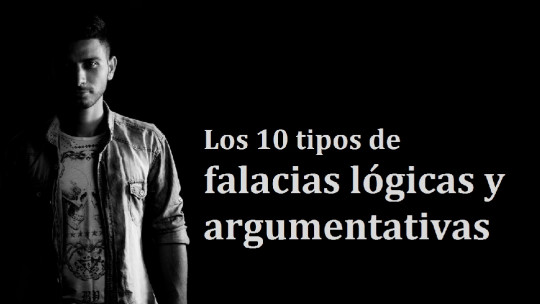In the world of philosophy and psychology, the concept of fallacy is very important, because it gives an idea of the quality of the reasoning that we can use to argue a point of view.
What is a fallacy? It is simply an error in reasoning, a type of argument in which the premises used do not lead to the conclusion. In fact, the term is derived from the word “fallare”, which means to lie or deceive. That is, it serves to emphasize the misleading nature of these reasonings.
But recognizing a fallacy is not easy, because it can take different forms. In fact**, there are many types of fallacies, some of which are not at all similar to each other**. It is important to know them well if you want to ensure the quality of the debates and knowledge generation processes in a valid way. Ultimately, a “mistake” can make the conclusion reached completely wrong.
Formal and informal fallacies
The most general classification that can be made of fallacies is the one that distinguishes between formal and informal fallacies While in the latter the reasoning error has to do with the content of the propositions, in formal fallacies the reasoning error is in the way in which the propositions relate to each other. Consequently, formal fallacies are always objective, while in the case of informal fallacies a debate can arise about whether or not there is an error in argument, given that their nature always depends on the context in which they are used.
For example, trying to discredit an idea by talking about negative aspects of the person who says it is an ad hominem fallacy, but the same is not true if talking about the person making the argument provides relevant information that should be brought up. If the person who decides to focus the debate on a worker’s misconduct is known for trying to mob him or her. In the case of formal fallacies, there is no room for discussion; in any case, one can examine whether the concepts used are correct (for example, if the same word has two different meanings throughout the logical operation).
In this article we will focus on analyzing the types of formal fallacies. To know more about the types of fallacies in general, you can visit this article.
Types of formal fallacies and examples
Next we will review the main types of formal fallacies.
1. Fallacious disjunctive syllogism
In this fallacy we start from a disjunction of the style “A and/or B” When one of the possibilities is affirmed, the other is assumed to be false. Of course, this conclusion does not follow from the premises.
2. Affirmation of the consequent
In this formal fallacy it is assumed that if a premise is true then the consequence of this premise also indicates whether its predecessor is true or not.
3. Denial of the antecedent
In this kind of formal fallacy The reasoning is articulated as if by denying a premise its conclusion had to necessarily be false
4. Fallacious denial of the conjunction
This fallacy occurs when When a phenomenon does not occur as a result of a set of elements, one of those elements is denied
5. Undistributed middle ground
In this fallacy There is an element that connects two others and that does not appear in the conclusion although it does not encompass one of them in its entirety.
6. Categorical syllogism with negative premises
This fallacy occurs in any categorical syllogism in which both premises are a negation since nothing can be concluded from them.
- Example : “No mammal has feathers, no mouse has feathers, so no mammal is a mouse.”
7. Categorical syllogism with negative conclusion from affirmative premises
In categorical syllogisms You cannot obtain a negative conclusion from affirmative premises and doing so means falling into fallacious reasoning.
- Example : “All Germans are Europeans and some Christians are Europeans, so Christians are not Germans.”
8. Four-term fallacy
In this fallacy there are four terms, instead of three, which would be necessary for it to be valid This occurs because one of the terms has two meanings.
- Example : “Man is the only animal capable of taming fire, woman is not a man, so woman cannot tame fire.”









